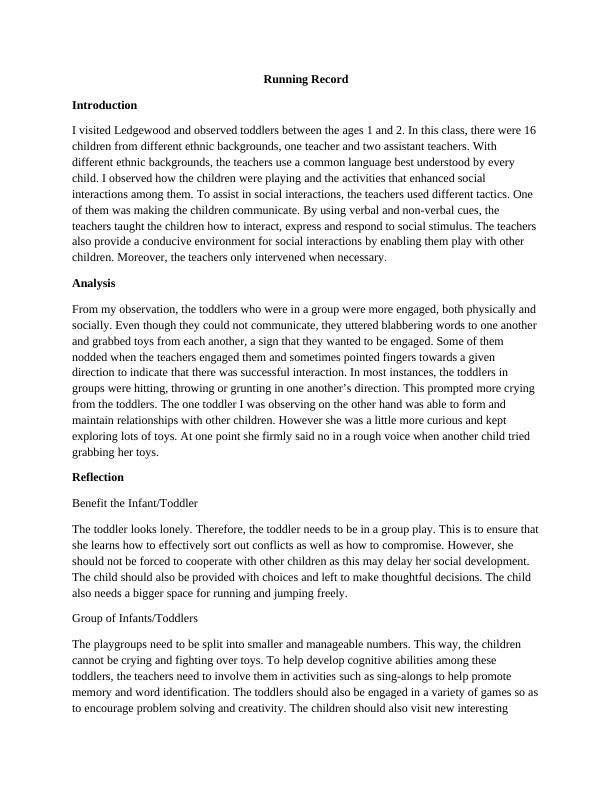Strategies to Enhance Social Interaction Skills of Children During Playtime
Observing and documenting the social interactions of infants or toddlers using running record and anecdote methods.
2 Pages876 Words13 Views
Added on 2022-09-13
Strategies to Enhance Social Interaction Skills of Children During Playtime
Observing and documenting the social interactions of infants or toddlers using running record and anecdote methods.
Added on 2022-09-13
ShareRelated Documents
End of preview
Want to access all the pages? Upload your documents or become a member.
Child Learning Story: Play Pedagogy
|10
|2513
|422
Cognitive Development of Infants and Young Children
|7
|1368
|371
Stages of Language and Communication Development in Children
|10
|2765
|80
Assignment on Baby Day Report
|10
|1705
|234
Children's Play and Development
|15
|3035
|256
Special Education - Assignment
|5
|859
|13

